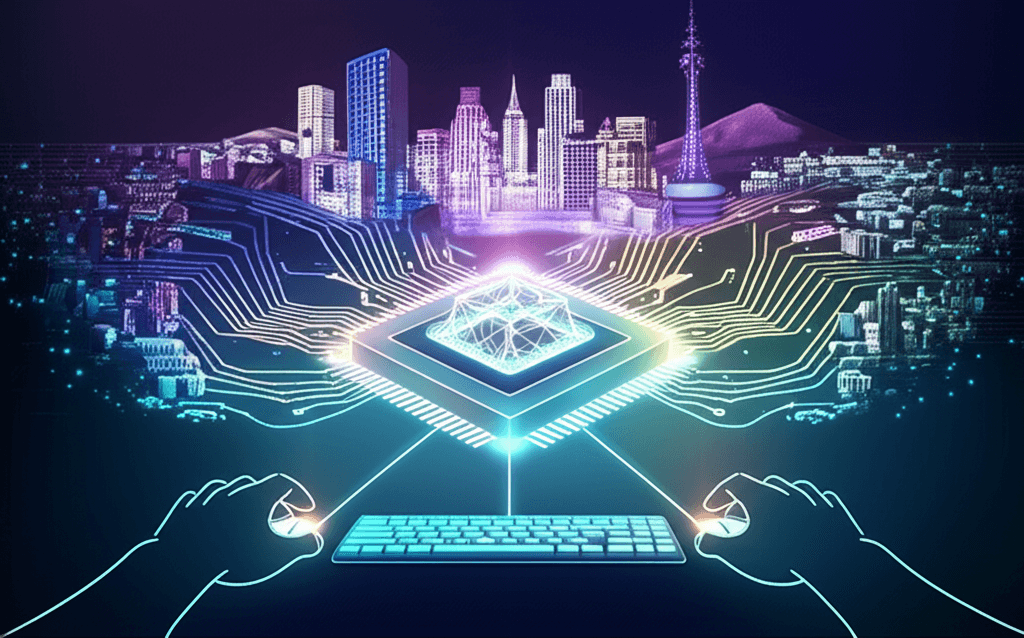Open-Source Matrix-Game 2.0 Challenges DeepMind, Unleashes Real-Time Interactive Video
Skywork AI unleashes Matrix-Game 2.0, democratizing cutting-edge interactive AI video generation and challenging industry giants.
August 16, 2025

In a significant move for the artificial intelligence industry, the new open-source model Matrix-Game 2.0 is offering capabilities in interactive AI video generation that rival some of the breakthroughs recently demonstrated by Google DeepMind's closed-source Genie 3 model.[1] Developed by Skywork AI, Matrix-Game 2.0 allows for the creation of interactive, real-time, and long-sequence video, a frontier in generative AI that promises to reshape gaming, simulation, and virtual content creation.[2][3] By making its model fully open-source, Skywork AI is not only providing a powerful tool to the global developer community but also directly challenging the closed-ecosystem approach of major industry players.[2][4] This release accelerates the development of "world models," AI systems that build internal representations of environments to simulate and predict future events, and democratizes access to this transformative technology.[2][4]
The core achievement of Matrix-Game 2.0 lies in its ability to generate fluid, controllable video streams in real time.[3] The model can produce continuous video at a stable 25 frames per second (FPS), with interactive sessions lasting for minutes at a time.[5][6] This addresses major hurdles in interactive video generation: latency and error accumulation over long sequences.[7] Users can directly influence the generated environment through keyboard and mouse inputs, controlling character movements and camera perspectives in scenes resembling popular games like Grand Theft Auto and Minecraft.[5][3] This level of real-time interactivity, where the model generates the next frame based on user actions, marks a significant step towards creating truly dynamic and explorable virtual worlds.[7][6] The model's capacity for minute-long generation also drastically improves temporal coherence, ensuring that the generated video remains logical and consistent over extended periods, a critical factor for usability and immersion.[5][6]
Underpinning these capabilities is a novel technical architecture that diverges from many contemporary generative models.[3][8] Unlike systems that rely heavily on text prompts, Matrix-Game 2.0 employs a vision-driven approach, learning spatial understanding and physics directly from visual data.[7][3] This method is designed to build a more intuitive "spatial intelligence" within the model.[7] The architecture consists of several key components, including a 3D Causal VAE for efficiently compressing video data and a Multimodal Diffusion Transformer that combines visual information with user action commands to generate subsequent frames.[3][8] To achieve its real-time performance, the model utilizes a Self-Forcing training strategy and an autoregressive diffusion mechanism, which helps to minimize delays and prevent the compounding errors that can plague long-sequence generation.[5][7] This entire system is powered by a scalable data production pipeline that generated approximately 1,200 hours of precisely annotated interactive video from sources like Unreal Engine and GTA5.[7][4]
The decision to release Matrix-Game 2.0 as an open-source project carries profound implications for the AI landscape.[2] Just a week prior to its launch, Google DeepMind drew significant attention with Genie 3, a model with similar capabilities for generating interactive environments from a variety of prompts.[6][4] However, Genie 3 remains a closed-source project, leaving researchers and developers to speculate about its underlying mechanisms.[2][6] By providing full access to its model weights, codebase, and technical report, Skywork AI is fostering an environment of collaboration and accelerated innovation.[2][4] This open approach allows developers, researchers, and hobbyists to experiment with, build upon, and contribute to the advancement of world models.[7][4] It lowers the barrier to entry for a technology that would otherwise require immense computational resources, with reports suggesting Matrix-Game 2.0 can run effectively on a single GPU.[4]
In conclusion, the arrival of Matrix-Game 2.0 represents a pivotal moment in the evolution of generative AI. By delivering a powerful, real-time, and interactive video generation model to the open-source community, Skywork AI provides a direct and accessible alternative to proprietary systems like DeepMind's Genie 3.[2][1] The model's technical innovations in long-sequence, high-frame-rate video generation open up new frontiers for applications in game development, embodied AI training, virtual production for film, and educational simulations.[5][4] More importantly, its open-source nature acts as a catalyst, empowering a broader community to explore and expand the possibilities of creating and interacting with dynamic, AI-generated virtual worlds, potentially speeding up progress toward more advanced and generally capable AI systems.[2][4]